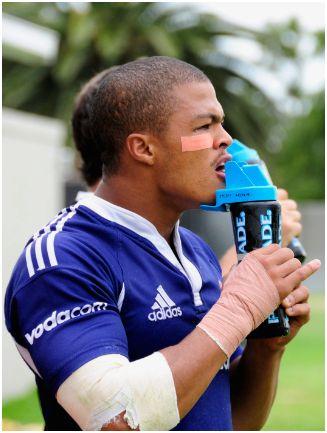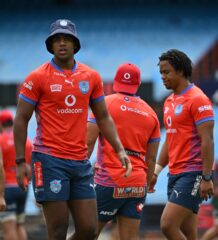Analysis of Injury Incidence in Top Level Rugby

Juan De Jong
Over the course of a demanding Vodacom Super 14 season, injury management often makes the difference between a good or great season. A serious injury to a key player, or a spate of three or four consecutive injuries, will usually turn a season for the worse. The injuries to Cheetahs stars Heinrich Brüssow and Lionel Mapoe come to mind, costing those players an entire Super 14 season. (And, in the case of Brüssow, the whole year.)
Recently, 502 professional rugby players were tracked over the course of two seasons, with training and match time, the number of injuries and the severity thereof all documented.
Over the course of two seasons, players accumulated 11,581 hours of match time, and 197,811 hours of training time. Bear in mind that a match makes up a total of 20 hours of player time – 15 players play 80 minutes, and this time is added up to produce the total of 20 hours. Similarly, training time is made up of all the time spent by each player in training. A total of 1,475 injuries were reported, an average of three injuries per player in just two seasons! Of course, some players escape the ‘hoodoo’ altogether, while others may pick up five or six injuries in this time.
Not surprisingly, injuries are far more likely to happen during matches than during training. It turns out that an injury will occur once every 10.7 player hours in a match. Remember that a match consists of 20 total hours, because each player plays an hour and twenty minutes. This means that on average, there will be two injuries per team per match.
You may also recall that a few weeks ago, we looked at how the second half of matches required more running, more distance covered, twice as many impacts and less rest than the first half. Linked to that is that an injury during a match is about 30% more likely to occur in the second half than in the first, and this injury will also be more severe, forcing the player to miss an average of 20 days of rugby, compared to 16 for an injury that happens in the first half. This once again emphasises how vital fitness, conditioning and player management are, since fatigue seems an important contributor to injury risk and severity.
In training, the incidence of injuries is a lot lower – an injury occurs once every 500 hours. To help conceptualise what this means, if a team has a squad of 40 players, and each player spends eight hours per week training, the weekly total training time is 320 hours. Since an injury occurs once every 500 hours in training, you would predict that an injury would occur once every eleven days in training. In the course of a 16-week season, that means you can expect 11 injuries, or more than a quarter of the team to be injured in training!
Clearly, the rate of injuries is high, emphasising how vital good player management is. The next question might be whether these injuries are serious? It turns out that an injury in training costs a player an average of 23 days away from the game, whereas an injury during a match will force a player to miss about 19 days. In other words, a training injury is slightly more severe than a match injury, which is a surprising finding. The incidence and severity are, of course, both dependent on where the injury happens. Most injuries occur to the legs, but these are less severe than arm or shoulder injuries, which cost about six weeks of time away from the game compared to two only for the lower limbs.
Finally, some training activities carry much higher risk than others. It turns out that fitness testing is the highest risk type of training. This does not mean it should be done away with, since it is obviously vital to assess players’ conditioning objectively, otherwise the risk of injury during matches may risk as players are poorly conditioned.
However, it does emphasise how carefully such testing should be done, and by qualified people. Other high-risk sessions include, not surprisingly, rucking and mauling training, and defence drills, whereas skills training, line-outs, scrummaging, weight training, and speed, agility and endurance training all carry lower risk of injury.
The dilemma for coaches is to balance these risks with the potential rewards. Defence, for example, is vital to a successful Super 14 campaign, but the high risk of injury can just as easily cause two or three injuries, each costing two to three weeks of player time and a downturn in the teams’ fortunes. It is a fine balance, and one which may well determine the destination of the Super 14 trophy.
Ends
[Written by Ross Tucker. Ross has been writing a regular column this season – in conjunction with Powerade, the official fuel to the Vodacom Super 14 players – giving you some useful insight into top-level sport and what is required to make the top players in world rugby tick.]
*Powerade Preservative Free Sports Drink is only available in ready-to-drink. Coca-Cola, Powerade and the P device are trademarks of The Coca-Cola Company © 2010
• Issued by Powerade, official fuel to the Vodacom Super 14 players.
• Visuals are courtesy of Gallo Images.
• For more information, additional visuals, or an opportunity to chat to Ross Tucker, please do not hesitate to contact Leigh Weir-Smith, 084 444 2212; studiopr@mweb.co.za
Related Posts
« Western Force too strong for Highlanders Brumbies to test injured Waratahs »
















